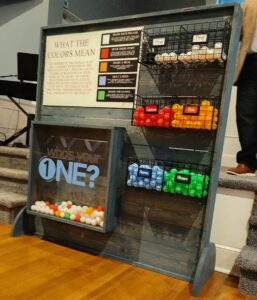Replanting Partnerships with Hispanic Churches- Are You Missing an Opportunity?
We hear a lot about a post-Christian nation and a post-Christian culture. Studies have shown that Christianity, especially practicing Christianity, where church attendance and biblical discipleship are customary, is on the decline in America. But did you know that there is a group of evangelicals that is actually increasing? Hispanics are the fastest growing demographic of evangelicals in the United States. As replanters, if we don’t have a plan in place to partner with our Hispanic brothers and sisters in our community, we are missing an opportunity to reach the next generation with the Gospel and to see a glimpse of Heaven while we do it.
Struggles for Hispanic Speaking Congregations
Jimbo and Bob spoke on the most recent podcast with Dr. David Quiroa, pastor of Valley Baptist Church-Espanol in Bakersfield, California. David has been a guest on the podcast before, and shares much wisdom on how English speaking congregations can partner with Hispanic communities and churches. David shared that one of the biggest struggles Hispanic speaking congregations have is that they often don’t realize replanting is an option. Their congregations have had only two choices for the past generations: grow or die. While the initial generation who moved to the United States may thrive, they lose the second generation (those who are born in the United States or were very young when they arrived), so the church often only lasts for the duration of a generation.
Another challenge Hispanic congregations face is a need for more resources, something with which many replanted English-speaking congregations can undoubtedly identify! While churches in Texas and other places with high Hispanic populations are thriving, there are currently no Hispanic churches in places like West Virginia. (That was shocking to me as I listened! A whole state of Spanish-speaking people in the United States is unreached!)
Hispanic congregations are also mislabeled as “Mexican” congregations, when in reality, there are 20 separate countries where Spanish is the native language, not to mention regional and cultural dialectical differences within those 20. David, for example, pastors 17 different nationalities within his church. As a pastor, he has to contextualize his sermon for multiple ethnicities and be aware of cultural and social differences.
What Can Your Church Do?

Now that you know the need for replanting and revitalizing Spanish-speaking churches, you might wonder how your church can meet that need. There are some steps you should take before you place a sign-out front advertising services in Spanish and brush up on your Duolingo app.
First, you must exegete your community. If you haven’t done that, the Replant Bootcamp has access to resources available to help you. Our Free Demographic Report can assist you as you try to sort out what the community around your church truly looks like and believes. The address of your church is not an accident– those people are your church’s responsibility. You will most likely find a more significant population of Hispanics in your community than you originally thought. And that number is set to grow nationwide. By 2060, the Hispanic population in America is expected to grow from 60 million to over 110 million.
Next, prayerfully consider which model for church partnership you will use to reach our Hispanic neighbors. There are typically two types of replanting partnerships for Hispanic congregations– the first is a “1 building, 2 church” model. The English-speaking church offers their facilities to the Spanish speaking congregation. The churches operate completely independent of one another, with separate budgets, staff, services, and congregations. Each assembly treats the other like a mission field. This partnership offers the Hispanic church a place to meet to reach the Hispanic community around the church, with the vision that they will grow and be able to “launch out” from the English speaking church at some point in the future.
The second model for partnership is a “1 building, 1 church” model. In this model, the Spanish speaking service is part of the English speaking church. They operate as one church with two services, one in each language. Their pastor is on staff with the English-speaking church, and the congregation is one with each other. Typically in this partnership, the Spanish speaking service and the English-speaking services will combine for church wide events and fellowship. This type of partnership offers the chance to replant a new type of church in your community that bridges the language gap between neighbors.
And finally, seek out a person of peace. We’ve talked about a person of peace before as a powerful tool in reaching the community. Is there someone in your congregation who is fluent in Spanish? Or perhaps a person in either community with ties to both? This person can help you navigate the cultural differences and also introduce you to the Spanish speakers around you. You will need to build relationships and get to know people to know what their spiritual and physical needs are and to understand their culture.
Revelations 7:9 tells us that Heaven will be filled with every tribe, every tongue, and every nation singing praises to the Lord. We can catch a glimpse of that here on Earth when we make reaching other nations a priority in our replant. We have the opportunity to impact not only our generation and our culture with the Gospel, but also future generations and cultures.
Upcoming Summit News:
We hope you are planning to attend the Replant Summit this weekend in Alpharetta, GA at NAMB headquarters. We are excited to meet each of you and to have a time of renewal and refreshment. We are also offering a new resource this year: some one-on-one time with 2 very skilled counselors.
If you are a struggling pastor who needs some Godly counsel and biblical prayer, you will have the opportunity to register for a time of one-on-one conversation and prayer with Pastor Jim Parrish of Shepherd’s Help. Jim has been helping pastors for decades and is an awesome resource for any pastor who needs an ear to listen.
And, if you are a pastor’s wife who will be attending the Summit and you need to speak with someone, you will be able to register for time with Dr. Darlene Dryer of Renewing Her Biblically. I have been on the receiving end of Dr. Dryer’s wisdom and I can tell you from experience, ladies, she is an absolute treasure. You will not want to miss the opportunity for her to speak life into your situation and apply biblical wisdom to it.


































